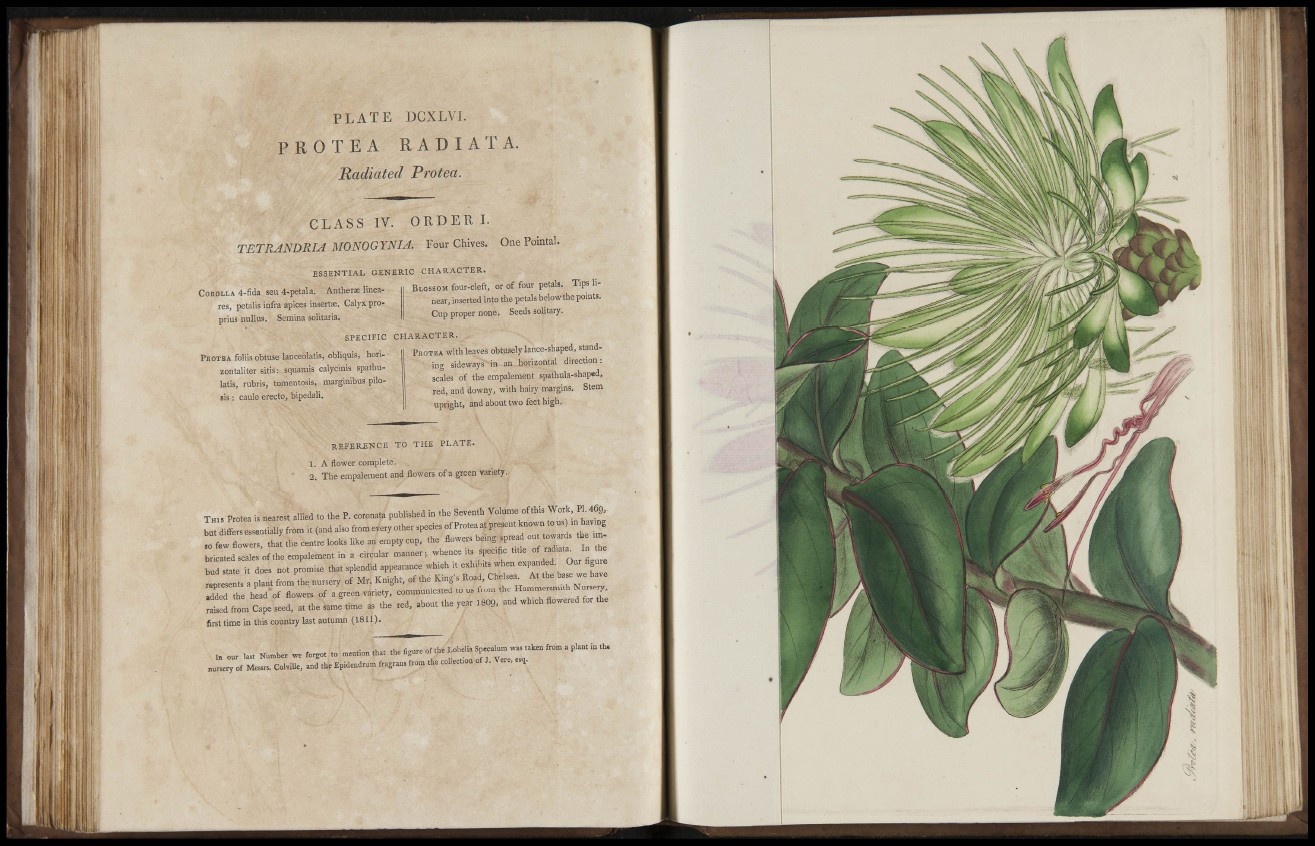
I
^ i í . H
I í'
'i
11 11'
!l
LL Í M
I'
!íÍJ>£ . ~
ft?:'
^Í&íl
-il-i;
m
: iliir
!|lt!
^ní ill í
iirh:'
p ^
I I'
P L A T E DCXLVÍ.
P R O T E A RADIATA.
Radiated Protea.
C L A S S IV. ORDER L
T E T R A N D R I A MONOGYNIA. Four Chives. One Pointal.
E S S E N T I A L GENERIC CHARACTER.
COROLLA 4-fida sen 4-petala. Antherse lineares,
petalis infra apices insertse. Calyx proprius
nullus. Semina solitaria.
BLOSSOM four-cleft, or of four petals. Tips linear,
inserted into the petals below the points.
Cup proper none. Seeds solitary.
S P E C I F I C CHARACTER.
PKOTBA foliis obtuse lanceolatis, obliquis, horizontaliter
sitis: sqnamis calycinis spathulatis,
rubris, tomentosis, marginibus pilosis
: caule erecto, bipedali.
PKOTEA with leaves obtusely lance-shaped, standing
sideways in an horizontal direction:
scales of the empalement spathula-shaped,
red, and downy, with hairy margins. Stem
1 upright, and about two feet high.
R E F E R E N C E TO THE PLATE.
1. A flower complete.
2. The empalement and flowers of a green variety.
THts Protea is nearest allied to the P. coronata published in the Seventh Volume ofthts Work, PI. ^ ^
I t diff Essentially from it (and also from every other species of Protea at present known to us m
I fewflors, tha the c e n t , looks like an empty cup. the flowers being sprea out towards t e .m-
Tri aredscales oftheempalement i n a circular manner, whence its specific tule /
bud state it does not promise that splendid appearance wh,ch it exh>b,ts when e^'panded. Our figure
Lpre s a plant from'the nursery of Mr. Knight, of the King's Road, Chelsea^ At the base we have
Idded the head^f flowers of a green variety, ^ red f tte
i i d from Cape seed, at the same time as the red, about the year 1809, and wh>ch flowered for the
first time in this country last autumn (1811).
I„ our Number we forgot to mention that ..e figure of the LoheHa S p c ^ ^ ^ ^
„ursery of Messrs. ColviUe, and the Epidendraru fragrans from the coHecUoa of J. Vere, esq.